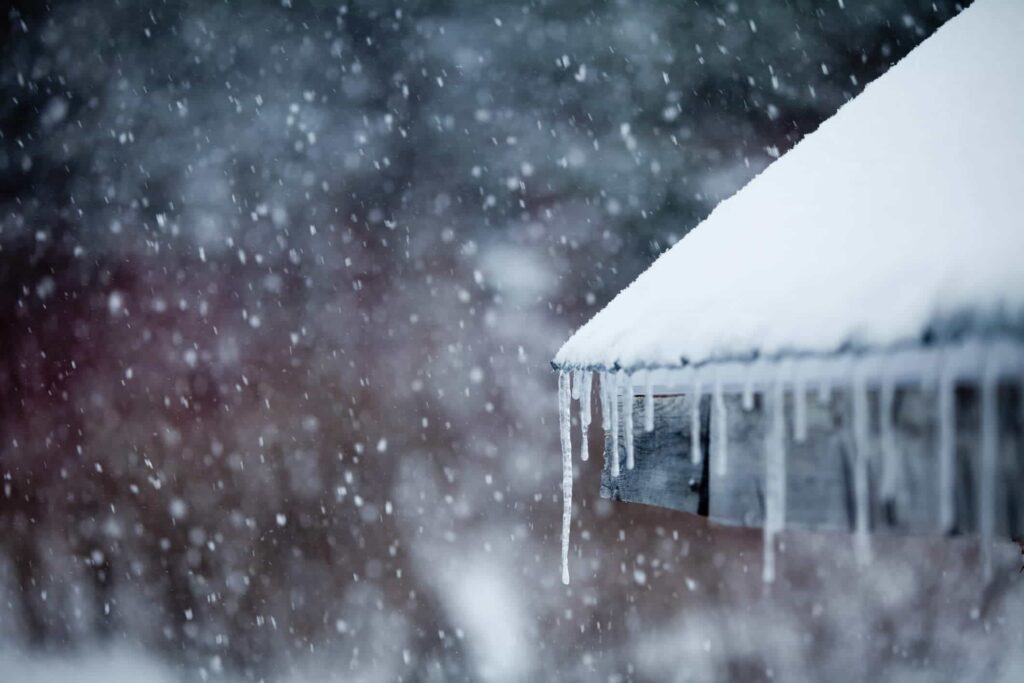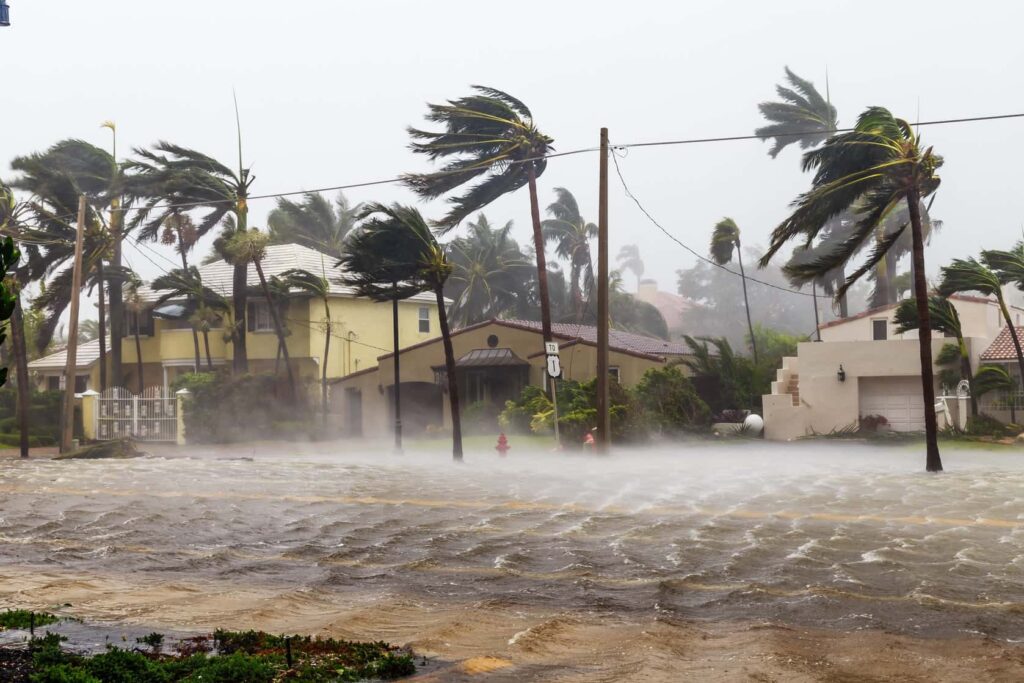Your roof is your first line of defense from the elements. Though it can withstand a lot of punishment, it’s not invincible, and it can sustain damage after a while. Rough weather is one of the main things that can wear down your roof.
Whether you live in an area that’s prone to high winds, intense rain, hail, snow, or even temperature changes, you’ll find that, over time, your roof will sustain varying levels of weather damage from such conditions.
Read on to find out about the weather that can have the largest effect on your roof, and what kind of damage you might see from different weather conditions.
1. Rain and Hail

Most roofs are built to handle rain, but not all roofs are built to handle intense rain. With intense rain comes debris from trees, and with that comes damage to the structural integrity of your roof.
Once your roof is compromised by falling debris, it’s only a matter of time before water gets into the holes left behind, which can cause hundreds of dollars of water damage to your ceiling.
Though heavy rain can be directly harmful to your roof’s structure, it may also leave you with mold or mildew growth, or with damaged shingles that will make your roof look less attractive.
Hail can cause many of the same problems to arise as heavy rain, except it can be even more harmful most of the time. Hail can crack your shingles, and leave your roof full of dents and dings. Minimize the impact of hail damage by consulting local roofing companies specializing in hail damage repairs.
Rain and hail damage is not particular to one area of the country, but rather an issue that homeowners all over America face. Make sure you get your roof checked thoroughly after heavy rain or a hail storm to ensure that you get any damage repaired quickly.
If you aren’t proactive about fixing roof damage, you will leave yourself open to more problems down the line.
2. Snow and Ice

Ice and snow can be just as extremely damaging to your roof as rain and hail. After a heavy snowstorm, you’re going to end up with both snow and ice on your roof. When either of them melts, they can cause many of the same issues that heavy rainfall would.
Melted snow and ice can pool up on your roof, which can cause leaks and mold to form over time if you do nothing about it.
You’ll also find some of your vents or gutters clogged if you let snow and ice gather on your roof. Try to find an effective way to safely clear snow and ice off of your roof to ensure that none of this happens.
If you’re unsure about where to start, contact your local roofing professionals and they can help you make a plan for clearing snow off of your roof. With this being primarily a northern state weather issue in states such as Colorado and New York, states lower in the country should be less concerned about snow damage.
3. Windstorms

High winds can very easily damage your roof. Aggressive winds can loosen, or even rip the shingles off of your roof, leaving it vulnerable to a variety of problems. Even if the shingles don’t rip off entirely, letting them get blown around will wear them down over time.
High winds can also blow heavy debris onto your roof, which can also leave it vulnerable to the elements.
Heavy winds can also curl the edges of your roof, which can also be a concern if left unchecked. If a heavy windstorm blows in, be sure to safely check up on your roof to see if you have any loose shingles up there.
It’s best to get roof damage like that handled sooner than later to ensure that no serious problems come about because of them. These windy conditions can affect most states but are can be more prevalent in states at risk for tornadoes.
For example, a roof in Huntsville, Alabama is far more likely to experience wind damage than a roof in Raleigh, North Carolina. In such a case, it is imperative that the Alabama homeowner with roof damage seeks out a roof replacement or roof repair contractor in Huntsville, depending on the extent of the damage.
4. Temperature Fluctuations

Believe it or not, even something as simple as hot weather can damage your roof over time. When the summer rolls around, especially in hotter states, if your roof isn’t properly prepped, your shingles can wear down, or even crack as the sun’s rays beat down on them.
Sometimes, the materials that make up your roof can even expand, or shrink, leaving spaces in your roof’s structure. This then leaves the roof vulnerable to water and will overall weaken it.
The best way to protect your roof from heat damage is to have it built properly from the start. If you find yourself in charge of designing a new roof for your home, try to aim to get high-quality building materials that can handle the sun, especially if you live in a hotter state.
Having good airflow in your attic is also a good way to control the temperature of your roof. If your attic is improperly heated, it can also damage your roof on its own. If it’s too warm, heat can rise up and weaken the shingles of your roof, causing them to loosen.











